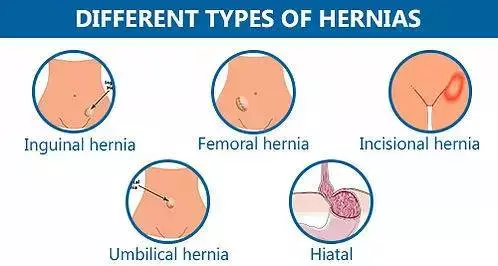- Home
- Medical news & Guidelines
- Anesthesiology
- Cardiology and CTVS
- Critical Care
- Dentistry
- Dermatology
- Diabetes and Endocrinology
- ENT
- Gastroenterology
- Medicine
- Nephrology
- Neurology
- Obstretics-Gynaecology
- Oncology
- Ophthalmology
- Orthopaedics
- Pediatrics-Neonatology
- Psychiatry
- Pulmonology
- Radiology
- Surgery
- Urology
- Laboratory Medicine
- Diet
- Nursing
- Paramedical
- Physiotherapy
- Health news
- Fact Check
- Bone Health Fact Check
- Brain Health Fact Check
- Cancer Related Fact Check
- Child Care Fact Check
- Dental and oral health fact check
- Diabetes and metabolic health fact check
- Diet and Nutrition Fact Check
- Eye and ENT Care Fact Check
- Fitness fact check
- Gut health fact check
- Heart health fact check
- Kidney health fact check
- Medical education fact check
- Men's health fact check
- Respiratory fact check
- Skin and hair care fact check
- Vaccine and Immunization fact check
- Women's health fact check
- AYUSH
- State News
- Andaman and Nicobar Islands
- Andhra Pradesh
- Arunachal Pradesh
- Assam
- Bihar
- Chandigarh
- Chattisgarh
- Dadra and Nagar Haveli
- Daman and Diu
- Delhi
- Goa
- Gujarat
- Haryana
- Himachal Pradesh
- Jammu & Kashmir
- Jharkhand
- Karnataka
- Kerala
- Ladakh
- Lakshadweep
- Madhya Pradesh
- Maharashtra
- Manipur
- Meghalaya
- Mizoram
- Nagaland
- Odisha
- Puducherry
- Punjab
- Rajasthan
- Sikkim
- Tamil Nadu
- Telangana
- Tripura
- Uttar Pradesh
- Uttrakhand
- West Bengal
- Medical Education
- Industry
Laparoscopic "Tunnel" Approach Enhances Surgical Outcomes of hiatus hernia with GERD: Study

A new study published in the journal of BMC Surgery showed that the laparoscopic "tunnel" approach significantly reduces the risk of vagus nerve injury and helps preserve perigastric vessels during surgery for hiatus hernia with gastroesophageal reflux disease (GERD). These advantages contribute to better postoperative results and improved quality of life for patients. This technique also holds promise for broader use in the treatment of hiatal hernia (HH) and GERD.
Achieving the best possible long-term management of reflux symptoms and indicators with little or no adverse effects is the aim of treatment for HH and GERD. The primary surgical technique for laparoscopic HH repair in conjunction with fundoplication is the traditional bilateral surgical approach (TBSA). One drawback of TBSA is that, while it can protect the vagus nerve locally during surgery, it is unable to evaluate the vagus nerve's integrity, which might result in undiscovered nerve injury. Thus, to protect the perigastric arteries and reduce vagus nerve injury, this study presents a unique laparoscopic "Tunnel" approach.
Clinical information was gathered sequentially from patients treated for hiatal hernia and gastroesophageal reflux illness at the First Affiliated Hospital of Ningbo University between June 2023 and June 2024 using a laparoscopic "tunnel" technique. Age, BMI, gender, DeMeester score, length of surgery, and postoperative symptoms were among the information gathered. At one, three, and six months after surgery, follow-ups were performed.
BMI was 25.56 ± 4.32 kg/m2, DeMeester score was 118.05 ± 17.71, GERD-Q score was 13 ± 2, and the average age was 54 ± 9 years. Nearly, 115 ± 15 minutes was the average surgery time. After surgery, symptoms dramatically decreased and after six months, the average GERD-Q score was 5 ± 1. At one month, 14 patients had dysphagia, 19 had belching, 5 had stomach distension, 16 had nausea, and 8 had diarrhea.
Only two patients were still belching at six months, and no other symptoms persisted. There were no reports of gallstones or vomiting. Overall, the vagus nerve damage may be less likely to occur using the laparoscopic "tunnel" technique than with the conventional surgical method. It is indisputable that maintaining function while reconstructing function is essential in the surgical treatment of functional disorders.
Source:
Feng, Z., Zhang, Z., Yan, Z., Gao, F., & Chen, Q. (2025). Innovative laparoscopic “Tunnel” approach in managing hiatal hernia with gastroesophageal reflux disease: a retrospective study. BMC Surgery, 25(1), 154. https://doi.org/10.1186/s12893-025-02900-1
Neuroscience Masters graduate
Jacinthlyn Sylvia, a Neuroscience Master's graduate from Chennai has worked extensively in deciphering the neurobiology of cognition and motor control in aging. She also has spread-out exposure to Neurosurgery from her Bachelor’s. She is currently involved in active Neuro-Oncology research. She is an upcoming neuroscientist with a fiery passion for writing. Her news cover at Medical Dialogues feature recent discoveries and updates from the healthcare and biomedical research fields. She can be reached at editorial@medicaldialogues.in
Dr Kamal Kant Kohli-MBBS, DTCD- a chest specialist with more than 30 years of practice and a flair for writing clinical articles, Dr Kamal Kant Kohli joined Medical Dialogues as a Chief Editor of Medical News. Besides writing articles, as an editor, he proofreads and verifies all the medical content published on Medical Dialogues including those coming from journals, studies,medical conferences,guidelines etc. Email: drkohli@medicaldialogues.in. Contact no. 011-43720751


